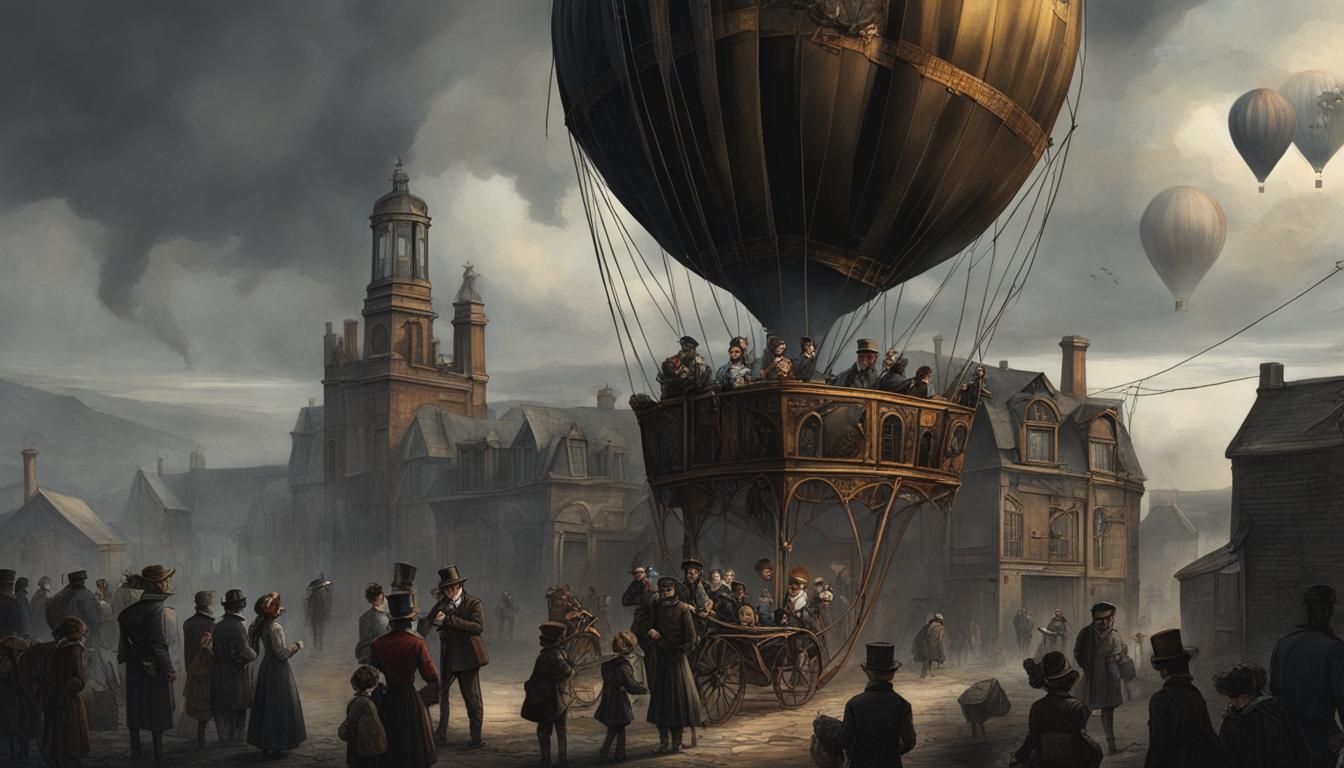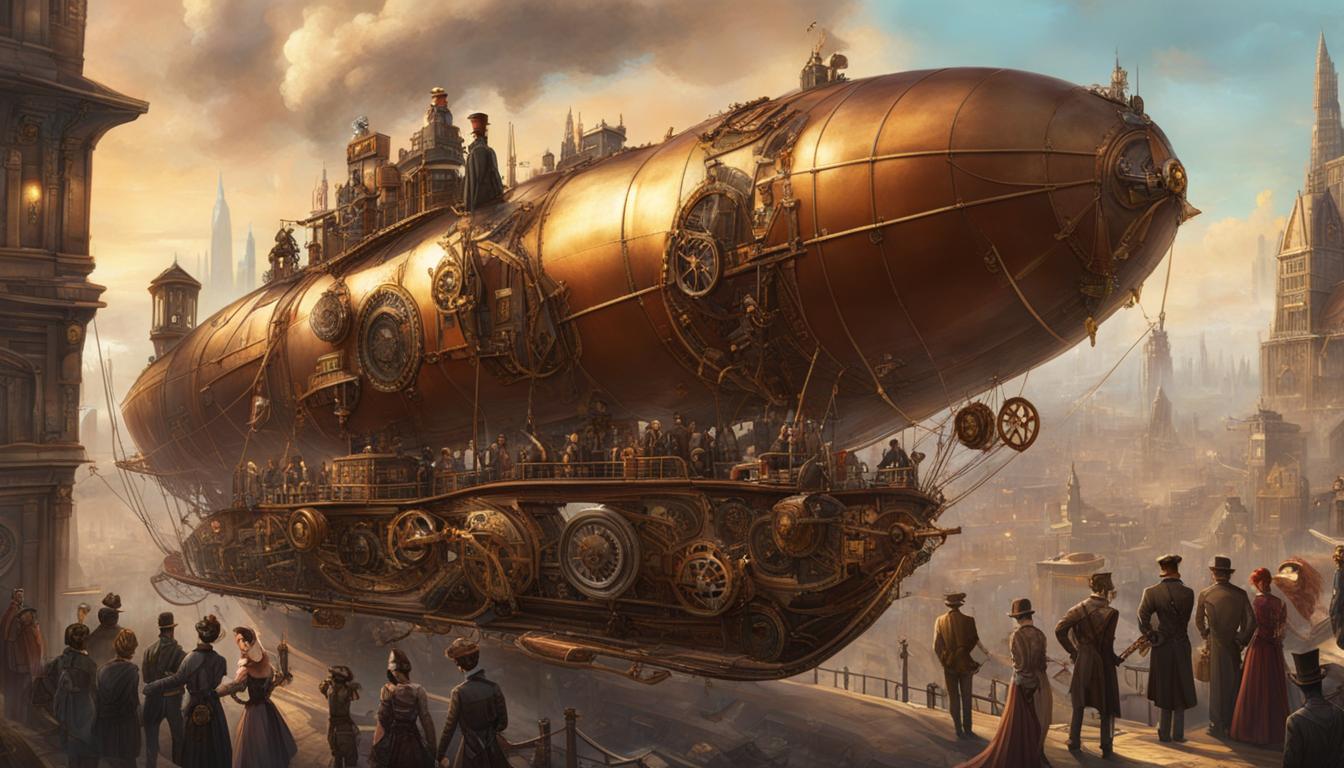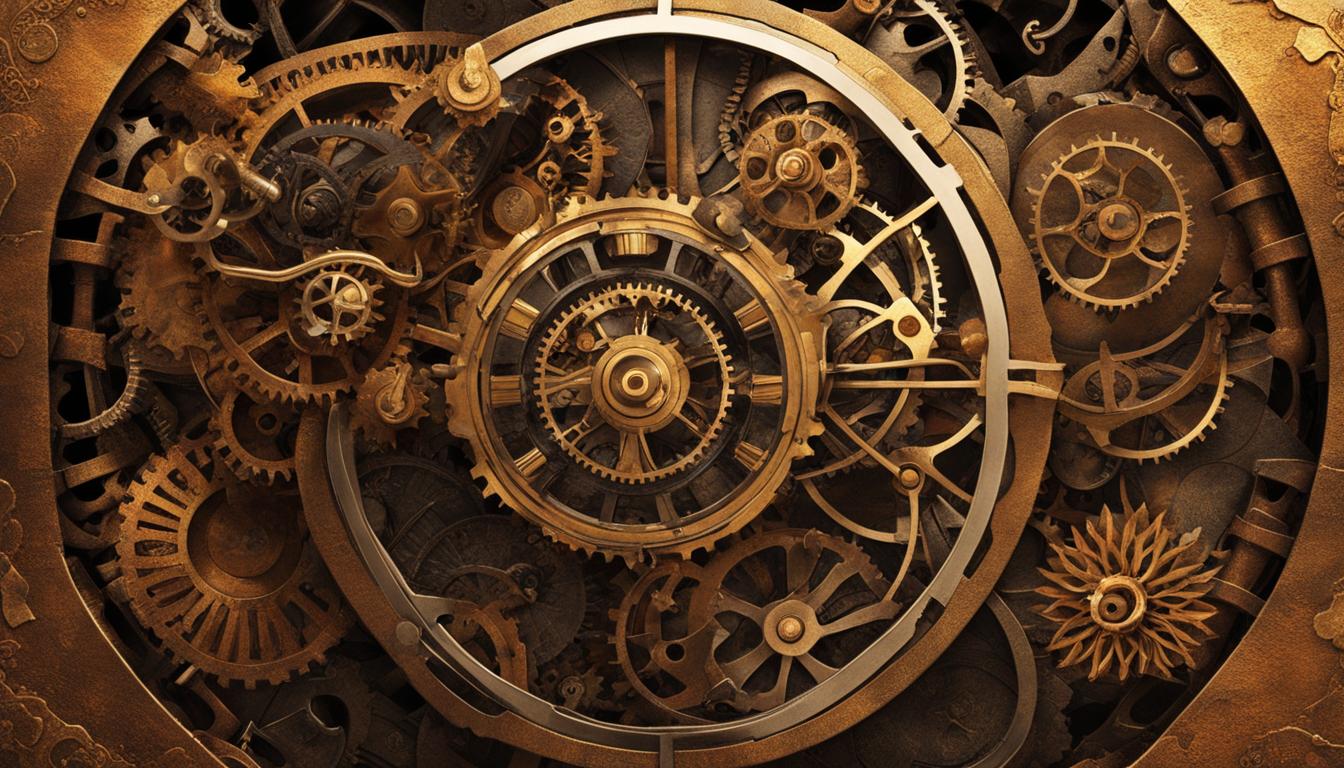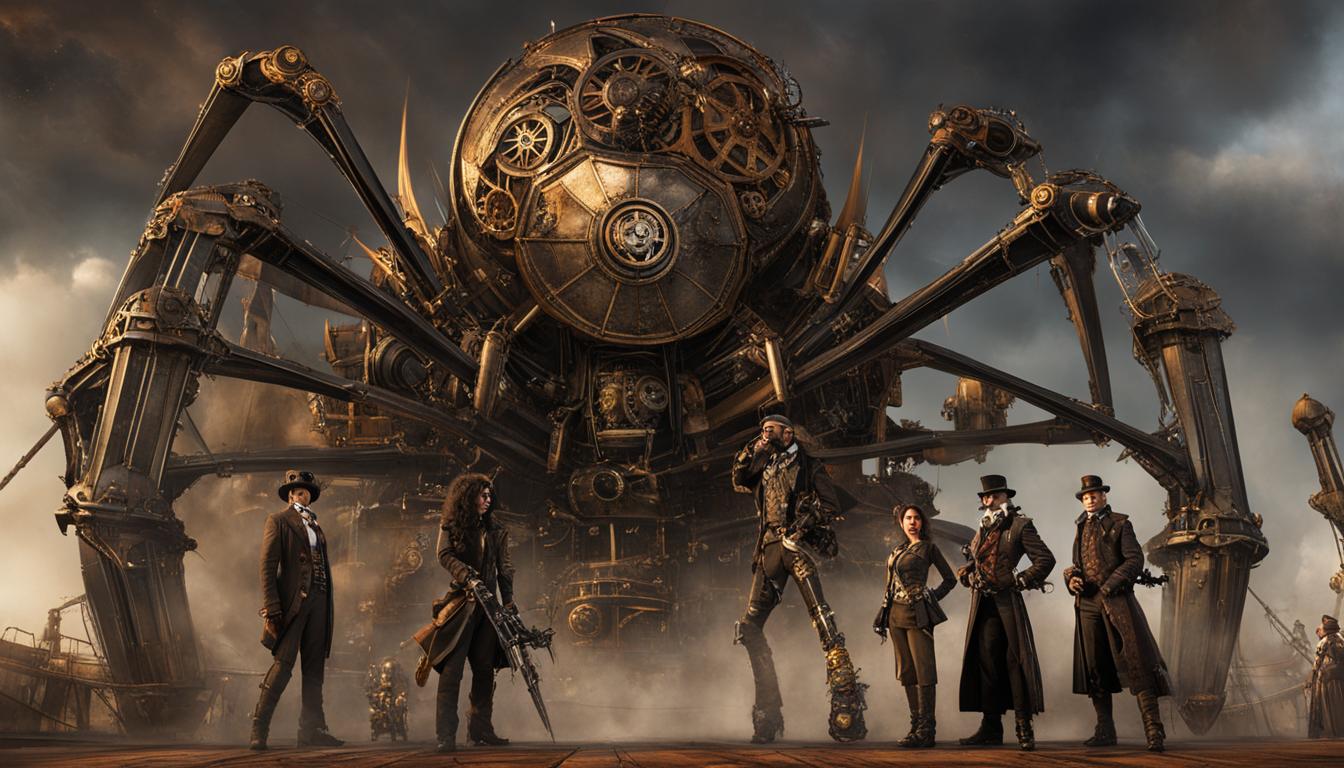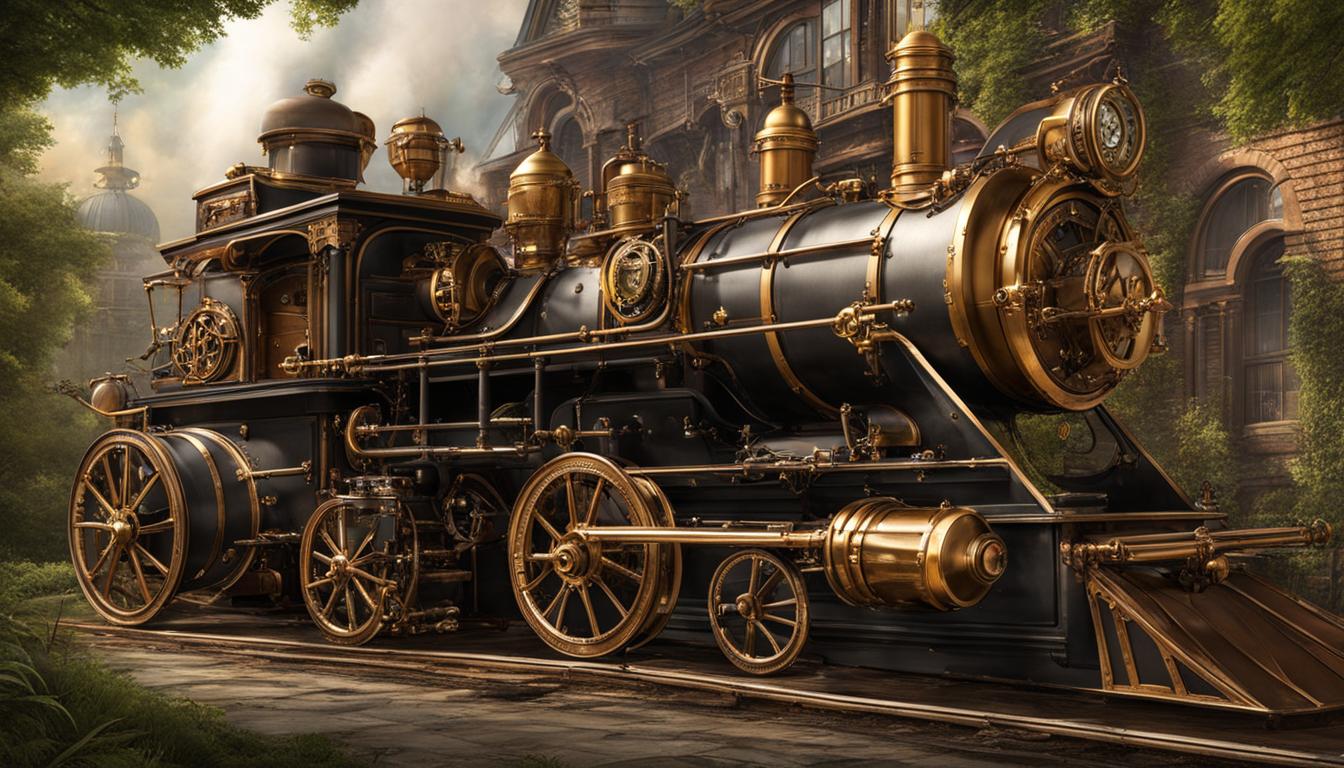Steampunk, the subculture that emerged in the late 1990s, has captivated the imaginations of enthusiasts worldwide. With its unique visual style featuring gears, goggles, and Victorian-inspired fashion, steampunk creates a mesmerizing blend of the past and the future. But steampunk is more than just an aesthetic trend; it is a powerful way to critique modern societal advancement and explore the evolution of technology.
Through the lens of steampunk, alternate histories come alive, offering thought-provoking insights into the consequences of different paths of progress. From the pages of steampunk literature to the intricately crafted accessories and gadgets of its followers, the subculture sparks a dialogue about the impact of technology on our lives and raises poignant questions about the direction of our own society.
Key Takeaways:
- Steampunk serves as a unique commentary on societal progress, critiquing modern advancement.
- Through its exploration of alternate histories, steampunk offers a glimpse into the consequences of different paths of progress.
- Steampunk raises important questions about the impact of technology on our lives and prompts reflection on the choices we make.
- The subculture’s influence extends beyond literature, with followers expressing their creativity through fashion and craftsmanship.
- Steampunk challenges the notion of a linear path of advancement, encouraging critical thinking and questioning within society.
The Regressive vs Progressive Debate in Steampunk
Steampunk, with its nostalgic view of societal progress, has sparked a lively debate within the subculture. While steampunk often romanticizes the past, it also acknowledges the advancements of society. The pace of progress in steampunk worlds is transformed, creating alternative versions of development. This intriguing exploration of progress, both regressive and progressive, allows steampunk to comment on the complexities of societal advancement and the potential consequences of different paths of technological evolution.
Steampunk narratives often depict a transformed society where technology has evolved at a different pace. This juxtaposition of historical contexts and speculative technologies raises thought-provoking questions about societal transformation. By imagining a world in which steam-powered technology reigns supreme, steampunk challenges our assumptions about the linear nature of progress and prompts us to contemplate the potential consequences of different paths of advancement.
The Regressive vs Progressive Debate in Steampunk
Table: A Comparison of Regressive and Progressive Themes in Steampunk Narratives
| Regressive Themes | Progressive Themes |
|---|---|
| Emphasis on nostalgia for the past | Exploration of innovative technologies |
| Representation of traditional social structures | Challenge to societal norms |
| Resistance to rapid industrialization | Advocacy for sustainable development |
| Preservation of historical aesthetics | Creative blending of past and future |
“Steampunk’s exploration of both regressive and progressive themes allows for a nuanced critique of societal progress. By presenting alternative versions of development, it challenges the idea of a linear path of advancement and raises important questions about the consequences of different choices.”
The regressive vs progressive debate in steampunk is not about advocating for one extreme over the other, but rather about fostering critical thinking and contemplation. Steampunk serves as a rich medium for individuals to engage with the complexities of societal progress, encouraging them to consider the implications of different paths of advancement and the transformative power of technology. Ultimately, the regressive vs progressive debate in steampunk offers a unique lens through which we can examine our own society and the choices we make in shaping our future.
Steampunk’s Dystopian and Utopian Societies
Steampunk literature often takes us on a journey through contrasting worlds, showcasing both dystopian and utopian societies. These imaginative realms serve as a mirror to our own reality, highlighting the potential consequences of different societal advancements. Through its satirical lens, steampunk challenges the notion of progress and prompts us to question the direction in which our own society is heading.
In the dystopian steampunk societies, we witness the dark underbelly of unchecked progress. Themes of social inequality, environmental degradation, and oppressive governance are brought to the forefront, forcing us to confront the possible consequences of neglecting ethical considerations in our pursuit of advancement.
“Steampunk offers a satirical view on societal advancement, shedding light on the flaws and potential dangers of unbridled progress.”
On the other hand, utopian steampunk societies present an idealized vision of the future, where technology has been harnessed for the betterment of humanity. These societies showcase the transformative power of invention and innovation, encouraging us to consider the potential benefits of conscientious technological development.
Through its exploration of these contrasting societies, steampunk invites us to critically examine the direction of progress in our own world. It challenges us to question the choices we make and prompts us to seek a balance between advancement and the preservation of ethical values.
Table: Comparing Dystopian and Utopian Societies in Steampunk Literature
| Dystopian Societies | Utopian Societies | |
|---|---|---|
| Social Structure | Heightened social inequality and oppressive governance | Emphasis on equality and communal harmony |
| Environmental Impact | Environmental degradation and resource exploitation | Sustainable practices and eco-friendly technologies |
| Technological Advancement | Unregulated technological development with potential ethical implications | Ethical technological innovations for the benefit of society |
| Overall Tone | Gritty, oppressive, and cautionary | Hopeful, idealistic, and aspirational |
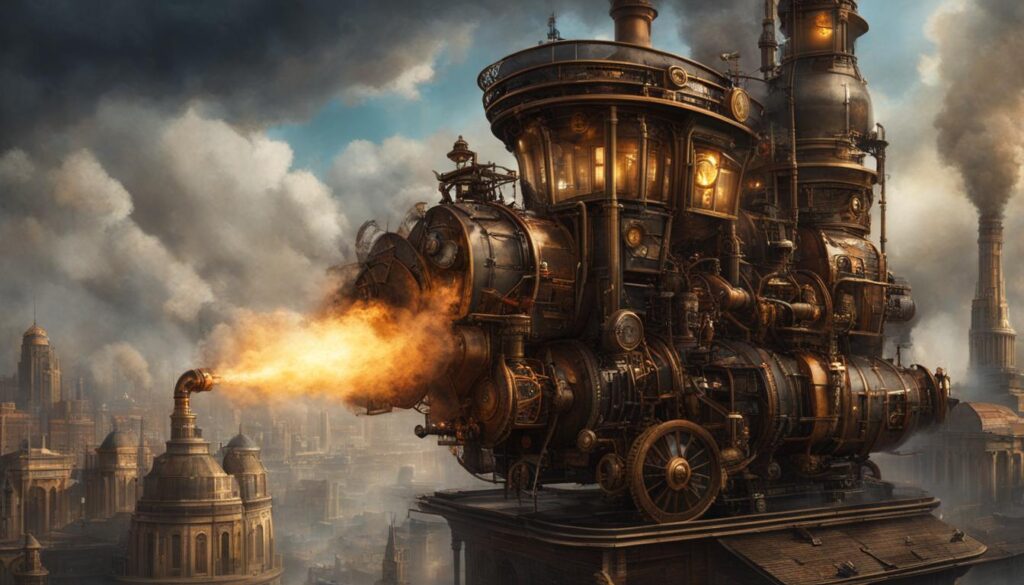
Steampunk stories often explore the dichotomy of progress, showcasing both the positive and negative aspects of technological evolution. Through its visual aesthetics and narrative themes, steampunk challenges us to consider the unintended consequences that may arise from unchecked advancement. It prompts us to reflect on our own society and the role technology plays in shaping our lives.
“In the world of steampunk, technology is both a blessing and a curse. It offers great potential for progress, but also poses significant risks.” – Anonymous steampunk enthusiast
By presenting a world where steam-powered technology coexists with Victorian-era aesthetics, steampunk serves as a commentary on the choices and compromises we face in our own technological advancements. It forces us to confront the impact of industrialization on society, reminding us that progress is not always a linear path.
The Dichotomy of Progress in Steampunk Tales
Within the steampunk genre, there is a constant exploration of the dichotomy of progress. Steampunk narratives often feature societies that have undergone dramatic transformations due to alternative technological advancements. Some stories depict dystopian worlds where unchecked progress has led to social inequality and environmental degradation. Others present utopian societies where technology has been harnessed for the betterment of humanity. These contrasting narratives highlight the potential consequences of different paths of progress and invite us to question the direction of our own societal advancement.
To illustrate the dichotomy of progress in steampunk, let’s consider a fictional tabletop game called “The Clockwork Era.” In this game, players assume the roles of inventors and explorers in a steampunk world. Each player’s city-state is powered by a unique technology, resulting in varying levels of progress and societal development. The game’s mechanics emphasize the trade-offs and consequences of different technological choices, challenging players to consider the ethical implications of their inventions.
| City-State | Technology | Progress | Consequences |
|---|---|---|---|
| Aetheria | Aether-powered airships | Rapid industrial growth | Pollution, class divide |
| Steamhaven | Steam-powered automatons | Efficient labor force | Loss of human jobs |
| Electropolis | Tesla’s electrical marvels | Renewable energy | Energy dependency |
This fictional tabletop game demonstrates the complex interplay between progress and its consequences. It highlights the choices we face as a society and the need to strike a balance between progress and sustainability. Steampunk’s portrayal of technology and industrialization invites us to critically examine our own world and consider the long-term impacts of our technological choices.
Steampunk as a Form of Protest and Resistance
Steampunk, with its shrewd juxtapositions of disparate historical contexts and speculative technologies, serves as a powerful form of protest and resistance. In the realm of steampunk, where Victorian aesthetics blend with innovative gadgetry, individuals find a space to challenge the dominant postindustrial technologies that often limit creativity and self-expression.
Steampunk’s “ethical spectacles” act as visual statements of dissent, allowing individuals to assert their identities and critique societal norms. Through their steampunk personas and creations, enthusiasts express their dissatisfaction with the closed nature of mainstream technologies, promoting a more inclusive and communal approach to innovation. In the world of steampunk, embracing individuality and celebrating the imaginative spirit serve as acts of resistance against societal expectations.
“Steampunk offers a creative outlet for individuals to reimagine and reinvent themselves, creating an alternate reality that challenges the norms and conventions of mainstream society,” says renowned steampunk artist and activist, Amelia Sparks. “By embracing the aesthetics of the past and integrating them with modern technologies, steampunk enthusiasts become agents of change, advocating for a more inclusive and ethically-driven vision of progress.”
Through their participation in the steampunk subculture, individuals not only find a creative outlet but also contribute to a larger social movement. The steampunk community fosters a DIY mindset, emphasizing the importance of craftsmanship and making. This emphasis on handmade creations not only showcases the subculture’s commitment to individualism but also highlights the potential of grassroots movements to challenge the status quo and pave the way for societal change.
Steampunk’s Ethical Spectacles: A Showcase of Resistance
In the world of steampunk, ethical spectacles play a pivotal role in expressing resistance against mainstream technologies and societal norms. These spectacles are visual representations of alternative possibilities, challenging the dominant narratives of progress. Through their inventive designs and provocative aesthetics, ethical spectacles prompt viewers to question the direction of technological advancements and to consider the ethical implications of current societal choices.
| Steampunk Ethical Spectacle | Symbolism | Impact |
|---|---|---|
| The Clockwork Rebellion Goggles | A fusion of clockwork gears and rebellious insignia | Inspires individuals to question authority and resist conformity |
| The Empowered Automaton Gauntlet | Emblematic of reclaiming power and autonomy | Encourages individuals to challenge oppressive systems and assert their agency |
| The Equality Engine Brooch | A symbol of social justice and inclusivity | Promotes conversations about equality and sparks movements for change |
These ethical spectacles not only serve as fashion statements but also act as catalysts for dialogue and change. They spark conversations about societal progress and the potential consequences of technological advancements. By raising awareness and provoking thought, steampunk encourages individuals to actively engage in shaping a future that aligns with their values.
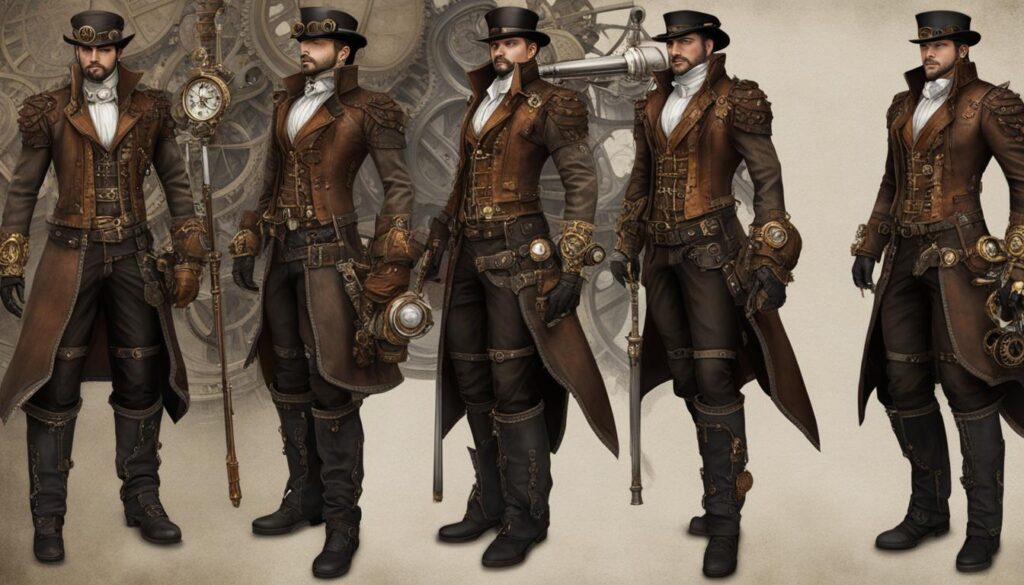
Table: Steampunk Fashion Elements
| Element | Description |
|---|---|
| Gears and Clockwork | Symbolize the fusion of technology and aesthetics, often used as decorative accents on clothing and accessories. |
| Corsets and Waistcoats | Represent the Victorian influence in steampunk fashion, creating a structured and tailored silhouette. |
| Goggles | Reference the industrial and adventurous spirit of steampunk, worn as both fashion statement and practical eyewear. |
| Layering and Mixed Fabrics | Bring depth and texture to steampunk outfits, combining different materials like lace, leather, and velvet. |
| Accessories | Include pocket watches, compasses, and vintage-inspired jewelry to complete the steampunk look. |
Conclusion
Steampunk’s hidden wisdom is unveiled when examining its unique lens on societal change. By exploring alternative histories, dystopian and utopian societies, and the impact of technology and industrialization, steampunk offers profound insights into our own world. Through its speculative nature, steampunk challenges the notion of a linear path of progress and invites critical thinking and questioning.
Steampunk’s societal critique prompts us to reflect on the choices we make in terms of progress. It unveils the complexities and potential consequences of different paths of advancement, urging us to consider the hidden implications of technological evolution. By reimagining the past and speculating about possible futures, steampunk becomes a catalyst for examining our own society through a fresh and thought-provoking lens.
Ultimately, steampunk’s hidden wisdom lies in its ability to provoke conversation and inspire individuals to delve deeper into the complexities of societal development. It serves as a reminder that progress is multifaceted and can have both positive and negative implications. Steampunk challenges us to navigate the intricacies of progress, prompting us to question and analyze the choices we make on our own journey of societal change.
FAQ
What is steampunk?
Steampunk is a subculture that combines elements of the past and future, characterized by its distinctive visual style and themes of societal progress.
When did steampunk gain popularity?
Steampunk has gained popularity since the late 1990s.
What are the key aspects of steampunk?
Steampunk encompasses literature, music, fashion, and craftsmanship, with its own conventions and communities around the world.
How does steampunk comment on societal progress?
Steampunk offers a unique perspective on societal progress through the juxtaposition of historical contexts and speculative technologies, raising questions about the impact of technology on our lives.
What is the debate within the steampunk subculture?
The debate revolves around the concept of progress, with steampunk often romanticizing the past and acknowledging the advancements of society.
How does steampunk explore dystopian and utopian societies?
Steampunk literature presents both dystopian and utopian societies, serving as a reflection of the potential consequences of different societal advancements.
What does steampunk say about technology and industrialization?
Steampunk explores the impact of industrialization and the consequences of different technological advancements, highlighting both the positive and negative aspects of technological evolution.
How does steampunk serve as a form of protest and resistance?
Through its shrewd juxtapositions and alternative histories, steampunk challenges the norms of mainstream society and allows individuals to express dissent and critique societal norms.
How does steampunk influence fashion and craftsmanship?
Steampunk fashion draws inspiration from the late 19th-century aesthetics, celebrating individualism and craftsmanship. Craftsmen and makers play a significant role in the steampunk community, creating unique accessories and gadgets.
What is the hidden wisdom of steampunk?
Steampunk provokes conversation and critical thinking about societal development and the potential consequences of different paths of progress.
Source Links
- https://www.historians.org/research-and-publications/perspectives-on-history/december-2018/steampunk-for-historians-its-about-time
- https://scroll.in/article/1021734/steampunk-how-this-subgenre-of-science-fiction-challenges-the-beliefs-of-civilisational-progress
- https://www.tor.com/2010/10/25/steampunk-and-history/

